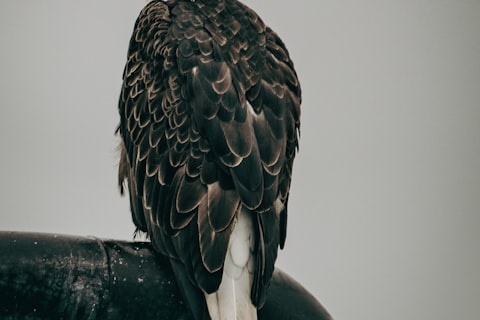Wings of Diversity: Exploring the Fascinating World of Birds
Birds, with their remarkable diversity of species, behaviors, and habitats, captivate the imagination and play integral roles in ecosystems worldwide. This article embarks on a captivating journey through the avian realm, shedding light on the diverse types of birds, their unique characteristics, and the vital contributions they make to the natural world.

Passerines: The Songbirds
Passerines, also known as perching birds, represent the largest order of birds and encompass a wide variety of species, including:
Robins
Robins, with their distinctive red breasts and melodious songs, are beloved songbirds found in diverse habitats, from woodlands to urban gardens. Their cheerful presence and sweet trills make them a cherished sight for birdwatchers and nature enthusiasts.
Warblers
Warblers, known for their vibrant plumage and agile foraging behavior, are renowned for their migratory journeys and intricate songs. These small, energetic birds add a burst of color and musical charm to woodlands and wetlands during the breeding season.
Finches
Finches, characterized by their stout beaks and diverse dietary preferences, encompass a broad spectrum of species, from the iconic house finch to the dazzling goldfinch. Their adaptability and colorful plumage make them a delight to observe in various ecosystems.
Birds of Prey: Masters of the Skies
Birds of prey, also known as raptors, are formidable hunters and include a diverse array of species, such as:
Eagles
Eagles, with their majestic stature and keen eyesight, are revered as symbols of power and grace. From the iconic bald eagle to the regal golden eagle, these apex predators command respect and admiration for their aerial prowess and ecological significance.
Hawks
Hawks, known for their agility and predatory prowess, are skilled hunters that play crucial roles in maintaining ecological balance. Their soaring flights and acute hunting skills make them formidable and captivating inhabitants of diverse habitats.
Falcons
Falcons, with their streamlined bodies and remarkable speed, are renowned for their aerial acrobatics and precision in hunting. These sleek predators are celebrated for their association with falconry and their role in controlling avian populations.
Waterfowl: Navigators of Wetlands
Waterfowl, comprising ducks, geese, and swans, are well-adapted to aquatic environments and include a diverse range of species, such as:
Mallards
Mallards, with their iridescent plumage and dabbling behavior, are among the most widespread and recognizable duck species. Their presence in wetlands and urban ponds adds vibrancy to aquatic ecosystems and provides opportunities for bird observation.
Canada Geese
Canada geese, known for their distinctive honking calls and V-shaped formations during migration, are emblematic of wild spaces and wetland habitats. Their seasonal movements and communal behaviors exemplify the interconnectedness of avian life.
Mute Swans
Mute swans, with their graceful necks and serene presence, are synonymous with elegance and beauty. These regal birds, often found in tranquil lakes and waterways, evoke a sense of tranquility and natural splendor.
Conclusion: Embracing the Richness of Avian Life
The world of birds is a tapestry woven with an astonishing array of species, each contributing to the intricate web of life in diverse ecosystems and captivating the human spirit with their beauty and behaviors. By recognizing the diverse types of birds and their ecological significance, we foster a deeper appreciation for the vital role these avian marvels play in sustaining ecosystems and enriching the natural world.
Wings of Diversity: Exploring the Fascinating World of Birds
Keywords
Birds Diversity Ecosystems
Introduction to Avian Diversity
Birds are a testament to nature's diversity, with a multitude of species, behaviors, and habitats that inspire and intrigue. They are pivotal in ecosystems and captivate us with their beauty and complexity.
<Paragraph>-
🌍 Global impact: Birds play integral roles in ecosystems worldwide.
-
🕊️ Diverse species: A journey through the avian realm reveals a variety of bird types.
-
🌟 Unique characteristics: Each bird species has distinct traits.
-
🌱 Ecological contributions: Birds are vital to the health of the natural world.
Passerines: The Songbirds
Passerines, or perching birds, are the most populous bird order, with a rich variety of species that charm birdwatchers and nature lovers with their songs and colors.
Robins
Robins are known for their red breasts and melodious songs, thriving in various habitats.
Warblers
Warblers are small, vibrant, and known for their songs and migratory patterns.
Finches
Finches display diverse diets and colorful plumage, adapting to different ecosystems.
Birds of Prey: Masters of the Skies
Raptors are skilled hunters that maintain ecological balance and awe with their flight and hunting abilities.
Eagles
Eagles symbolize power and grace, with their impressive size and hunting skills.
Hawks
Hawks are agile predators, contributing to the ecological balance with their hunting prowess.
Falcons
Falcons are fast and precise hunters, known for their role in falconry and population control.
Waterfowl: Navigators of Wetlands
Waterfowl are adapted to aquatic life and include ducks, geese, and swans, each with unique behaviors and contributions to wetland ecosystems.
Mallards
Mallards are widespread ducks known for their colorful plumage and dabbling.
Canada Geese
Canada geese are recognized by their honking calls and migratory V-formations.
Mute Swans
Mute swans embody elegance and beauty, often found in peaceful waterways.
Conclusion: Embracing the Richness of Avian Life
The avian world is a rich mosaic of species, each playing a role in the web of life and enchanting us with their beauty and behaviors.
<Paragraph>-
🎨 Tapestry of species: Birds form a complex mosaic of life.
-
🌐 Ecological roles: Each species contributes to ecosystem sustainability.
-
💖 Human connection: Birds captivate the human spirit with their beauty.
Figures
Bird Diversity Overview:
Images



تعليقات
إرسال تعليق